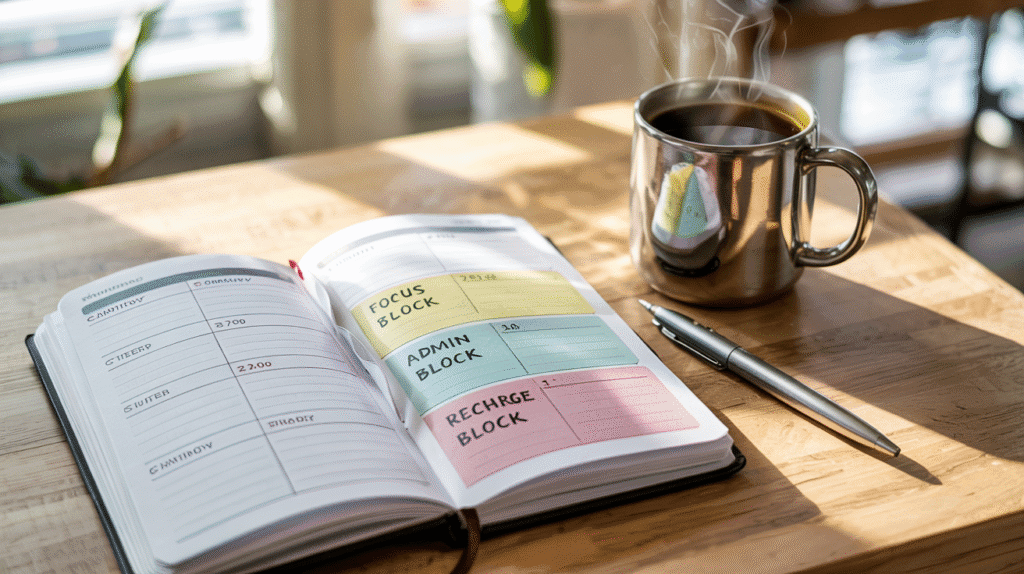If your days never look the same, building a routine can feel impossible.
You wake up not knowing exactly what will happen—and that’s okay.
Routines don’t have to be strict schedules.
They can be flexible frameworks that give your day rhythm, even when life is unpredictable.
Here’s how to build a daily routine that adapts, supports you, and brings calm to chaotic days.
🧠 Tip #1: Start With Non-Negotiable Anchors
Instead of planning your entire day minute by minute, build around anchors—habits that happen no matter when.
Examples:
- Drink a glass of water after waking up
- Take a 10-minute walk after lunch
- Journal for 5 minutes before bed
These mini rituals create consistency inside the chaos.

📋 Tip #2: Use Time Blocks Instead of Fixed Schedules
When your daily start times shift, strict hours create frustration.
Instead, divide your day into time blocks:
- Morning Focus Block (e.g., 9 AM–12 PM)
- Afternoon Admin Block (e.g., 1 PM–3 PM)
- Evening Recharge Block (e.g., 7 PM–9 PM)
🧩 Time blocks offer structure without pressure.
🛋️ Tip #3: Separate “Active” vs “Passive” Routines
Not all tasks need the same energy.
| 🏃♂️ Active Tasks | 🛋️ Passive Tasks |
|---|---|
| Writing reports | Listening to podcasts |
| Client calls | Organizing files |
| Creative brainstorming | Cleaning workspace |
Knowing the difference lets you match tasks to your energy level each day.

📱 Tip #4: Plan Only the Next 3 Moves, Not the Whole Day
Instead of overwhelming yourself at breakfast with a full-day plan, just decide:
✨ What are the next three things I want to do?
Example:
- Send invoice
- Walk the dog
- Outline project notes
Planning this way keeps momentum flowing—without feeling trapped.
💬 Tip #5: End Your Day With a Reset Ritual
A flexible day still needs a clear ending.
Try:
- Journaling 3 wins from today
- Prepping tomorrow’s outfit or breakfast
- 5 minutes of stretching or gratitude
🌙 Closing the day gently tells your brain: “You did enough. It’s time to rest.”

Daniel Carter believes that small daily changes lead to extraordinary results. Through simple and effective strategies, he inspires readers to take control of their routines, overcome procrastination, and unlock their full potential.











